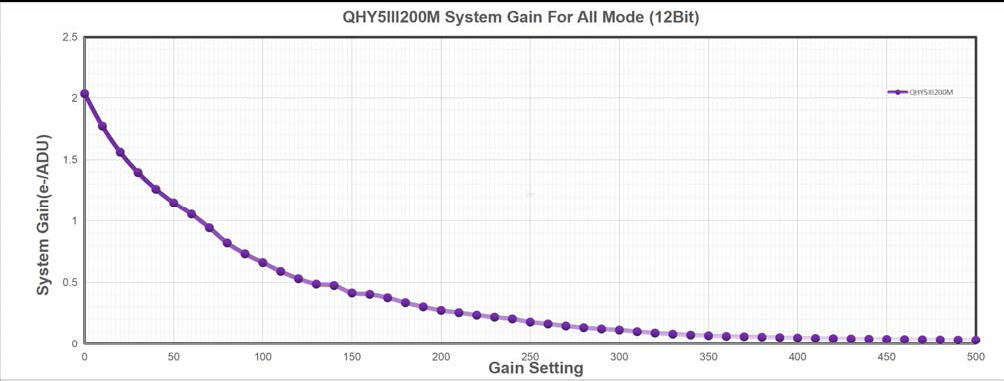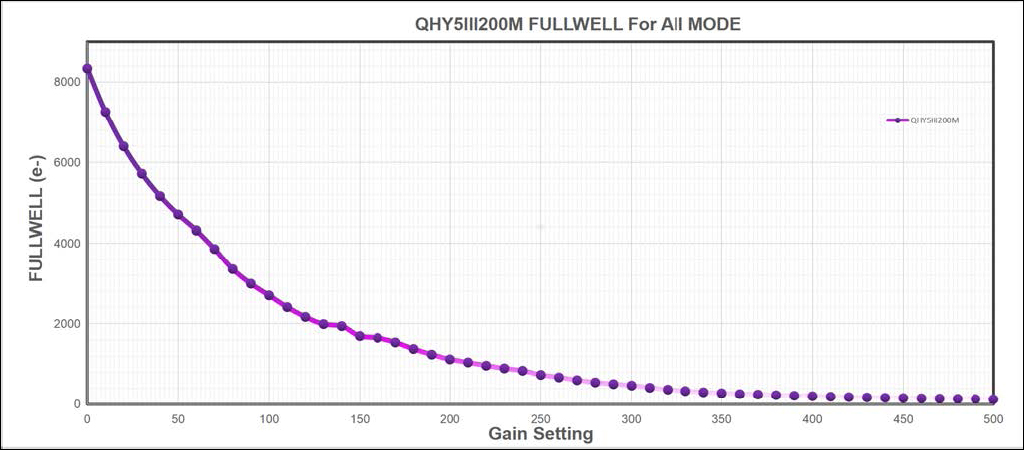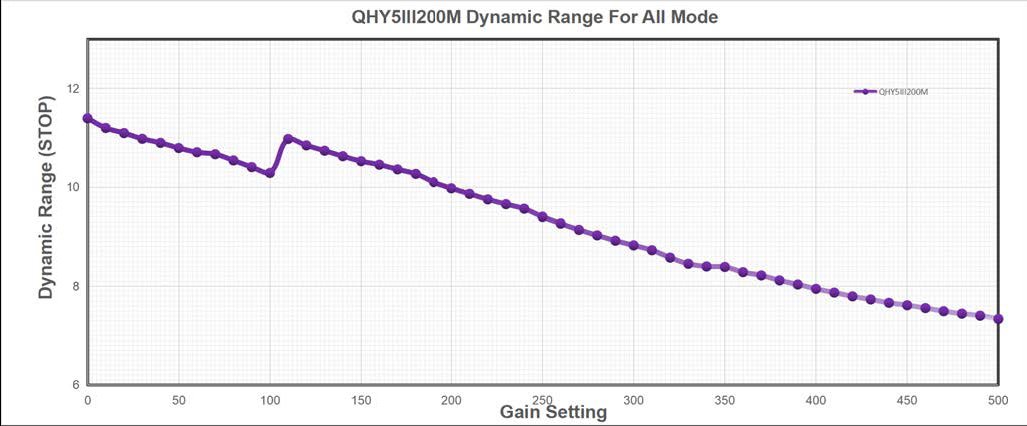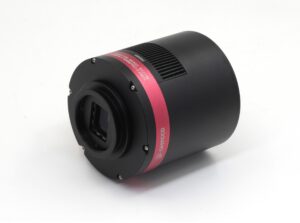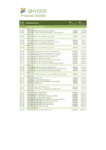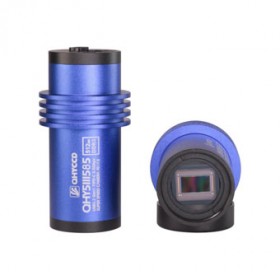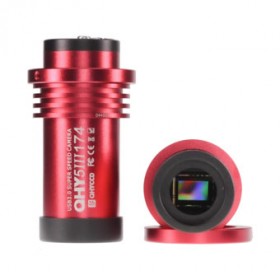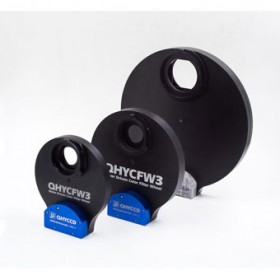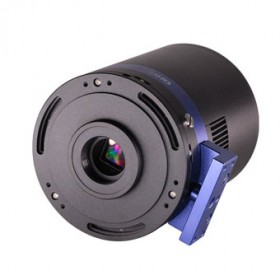Product Questions and Answers
- Description
-
Details
QHY-5-III-200 Mono – 2nd generation
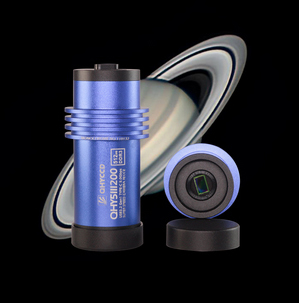 The QHY 5 III 200M is one of the first solar, lunar, planetary and guider cameras of the new 2nd generation QHY-5-III series. The Sony sensor is very sensitive in the near infrared spectral range (similar to the r
QHY 5-III-462C CMOS Camera
(#1931026 , € 295,-)
und der
QHY 5-III-585C Planetary and Guiding Camera
(#1931031 , € 469,-)
. Furthermore, with a pixel size of 4 µm, it is an excellent choice for the ST-4 compatible guiding function. The entrance window in front of the sensor is not IR blocked, a UV blocking filter and an IR 850 filter are included in the scope of delivery...
The QHY 5 III 200M is one of the first solar, lunar, planetary and guider cameras of the new 2nd generation QHY-5-III series. The Sony sensor is very sensitive in the near infrared spectral range (similar to the r
QHY 5-III-462C CMOS Camera
(#1931026 , € 295,-)
und der
QHY 5-III-585C Planetary and Guiding Camera
(#1931031 , € 469,-)
. Furthermore, with a pixel size of 4 µm, it is an excellent choice for the ST-4 compatible guiding function. The entrance window in front of the sensor is not IR blocked, a UV blocking filter and an IR 850 filter are included in the scope of delivery...As one of the first models in the new 2nd generation of planetary cameras and guiders, the QHY 5 III 200 M includes all the improvements and upgrades found in this latest camera series, including:
- Larger 512MB DDR3 internal image memory.
- Improved front-end design
- Compatibility with CS and C-mount lenses
- USB 3.2 Type-C interface
- Universal ST-4 guiding interface
- LED status indicator for malfunctions
- 1¼" body size for direct telescope connection
The QHY 5-III-200M is equipped with a Sony sensor that is also sensitive in the near infrared spectral range. In the range from 700nm to 1000nm, the QE is between 50 and 20%. The important methane absorption line at 890nm is also located in this range. Methane is an important absorption line in the atmospheres of the major gas planets and imaging at this wavelength can reveal unique details in the atmospheres of Jupiter and Saturn.
Until now, such extended NIR sensitivity has been available primarily in Sony's 6th generation colour CMOS sensors, such as the QHY 5-III-585C Planetary and Guiding Camera (#1931031 , € 469,-) . However, some planetary photographers often prefer to use a monochrome camera and special RGB and methane filters for their images. With the QHY-5-III-200M, this option is now available at an affordable price.
USB 3.2 Gen1 Type-C interface
The 2nd generation QHY Kamers of the 5 III series now have a USB 3.2 Gen 1-C interface. It is designed for a longer life span and can transfer data at up to 5 Gb per second.
We recommend using the official data cable from QHYCCD. The market is flooded with a large number of inferior Type-C cables where it may cause the camera to malfunction. If you want to use your own cable, please make sure it is a high quality cable.
Further technical details are shown in the following 4 graphic curves of the QHY-5-III-200M:
Further detailed information can be found on the QHYCCD
If you have any further questions, please send us an email to kontakt (at) baader-planetarium.de.
A general description of the 2nd generation of planetary and guider cameras can be found here:
Baader Blogpost:
New QHY 5 III series of planetary and guiding camerasThis entry was posted on November 18, 2022 Last modified on February 28, 2024.
Additional Information
| General | |
|---|---|
| Manufacturer | QHYCCD |
| SKU (#) | 1931035 |
| EAN Code | 4047825056542 |
| Application | Guiding and Planetary Cameras |
| Sensor Information | |
| Sensor | SC 2210 |
| Sensor Size | 7,68 x 4,32 mm |
| Pixel Size | 4µm x 4µm |
| Resolution | 1920 x 1080 Pixel |
| Imaging Features | |
| Monochrom or Color? | Monochrome |
| Maximum Frame Rate | Full Resolution: 96.5FPS@8BIT, 60FPS @16BIT |
| Full Well Capacity | 8 ke- |
| Read Noise (e- RMS) | 0.75e- to 3e- |
| A/D Conversion | 12-bit (output as 16-bit and 8-bit) |
| Range of exposure times | 15 µs - 900 Sec |
| Shutter | Electronic Rolling Shutter |
| Additional Features | |
| Cooling | The camera has no active cooling |
| Built-in image Buffer | Internal image memory 512MB DDR3 |
| Electronics | |
| Power Supply | Please note: the camera is powered exclusively with the included USB 3.0 cable! |
| Body and Connections | |
| Backfocus | 17 mm |
| USB Connection | USB 3.2 Gen1 Type-C |
| Telescope connection | 1.25-inch, CS and C-mount compatible |
| Guiding Port | Universal ST-4 compatible |


